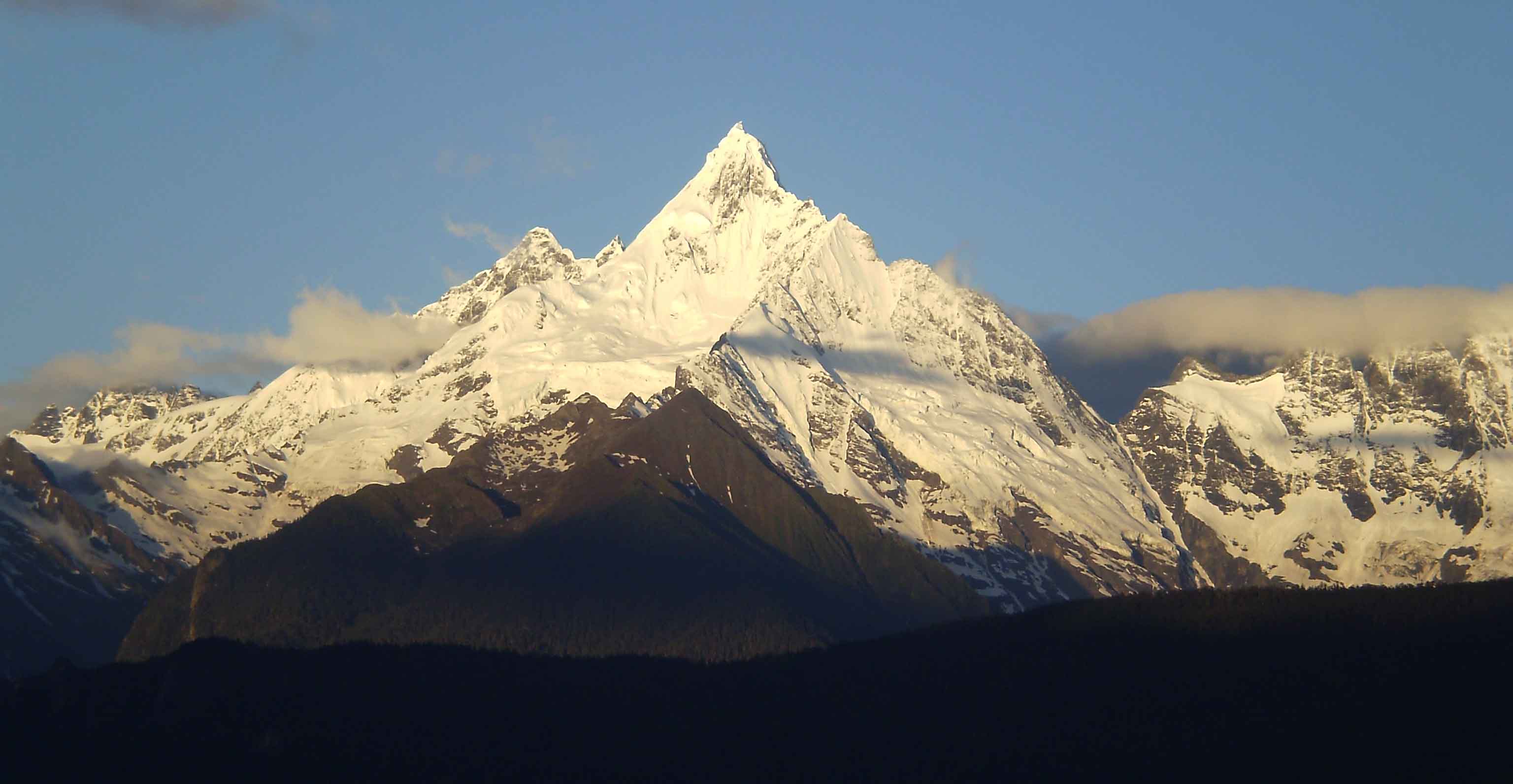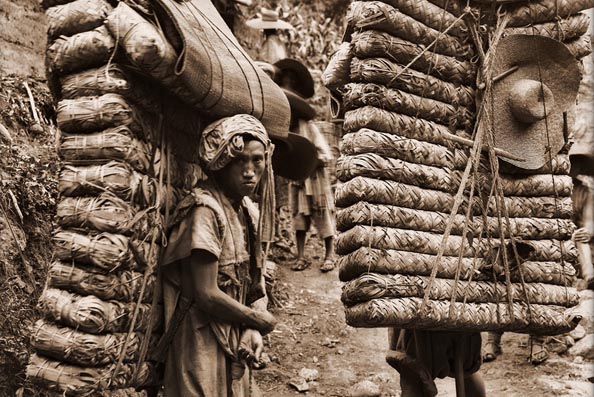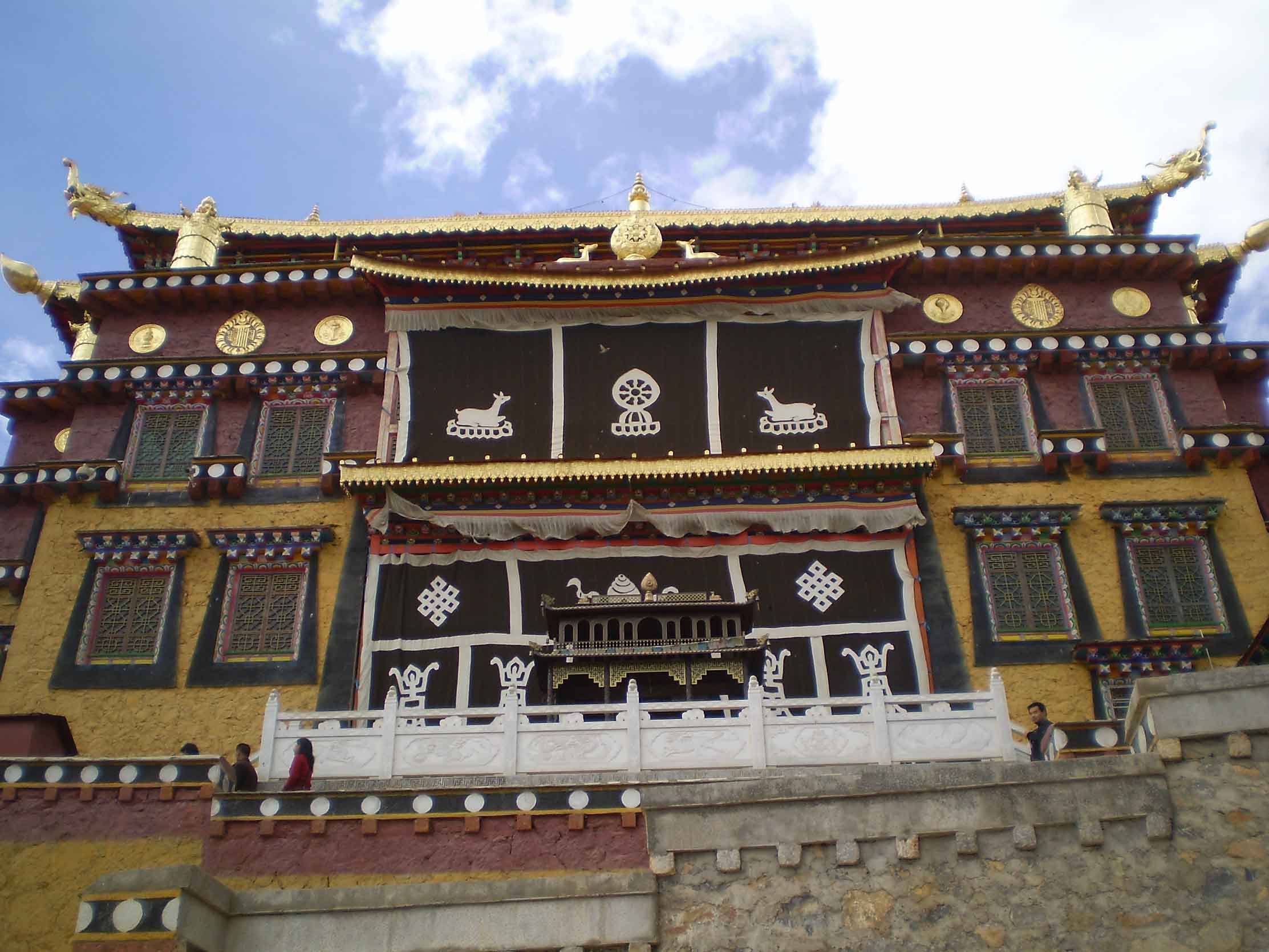The Old Tea Horse Road (Chá Mǎ Gǔ Dào 茶馬古道 o Chá Mǎ Dào 茶馬道) was a trade route that linked the Chinese province of Yúnnán 雲南 with Tibet. For more than a thousand years, products like salt and sugar from China have been exchanged for all kinds of Tibetan objects through this route. But the goods that were most traded, and that gave name to this network of roads, were tea and horses. However, this was not a unique route, since there were others that came from Sìchuān 四川, and others that crossed Nepal to get to India or that led to Burma.
For more than a thousand years, tea coming from China was exchanged for Tibetan steeds through the Tea Horse Road.
In Yúnnán, the tea mainly came from Pǔ'ěr 普洱市, a prefecture city located about three hundred kilometers from the provincial capital, Kūnmíng 昆明. Steam was applied to the tea leaves to compress them into blocks, in order to make them easier to store and transport. This is what was called zhuān chá 砖茶 or "brick tea". Tea leaves were also compressed into disc or cake shapes, called bǐng chá 餅茶. Tea destined to trade with Tibet was a very coarse black tea and contained pieces of stems and branches. Even today this tea is found throughout Tibet; each block can weigh between half a kilo and three kilos.

Tea pressed in the form of cakes to facilitate its conservation and transport.
The network of roads crossed the villages of Dàlǐ 大理 and Lìjiāng 麗江, passed through Gyelthang (later called with the commercial name of "Shangri-La"), and ascended to Déqīn 德欽, in the northwestern corner of Yúnnán province, where the sacred Khawa Karpo stands, a mound of 6740 meters high, in the Méilǐ Xuěshān mountain range 梅里雪山.

Mount Khawa Karpo, in the northwestern corner of Yúnnán, bordering Burma and Tibet.
The road that came from Sìchuān originated from the town of Yǎ'ān 雅安, moved westwards through Kāngdìng 康定, Lǐtáng 理塘 and Bātáng 巴搪, and went into Tibet to converge with the route from Yúnnán. Buddhist monasteries along the route were generally responsible for regulating the distribution of tea in their corresponding area.

Tea Horse Road: Porters carrying tea.
Today the route is paved, and trucks with all kinds of Chinese goods circulate up and down it. But once the roads were difficult and tortuous, surpassing in some points the five thousand meters of altitude, and the merchants took three weeks to travel on foot the 225 kilometers from Yǎ'ān to Kāngdìng. Each porter, man or woman, carried a minimum of 60 kilos of tea on their backs, some of them carrying more than 125 kilos. The more weight, the more benefit. And they were not exactly rich. Each kilo of tea transported was worth a kilo of rice back home. They walked with the help of a crutch, stopping every few steps to support the load on it a few moments before continuing. They had to cross rivers and cross crags, and face very adverse weather conditions, both in summer because of the rains and in winter because of the snow, risking their lives practically at every step. Many did not return home. From Kāngdìng, tea was packaged on yaks and mules and continued on its way to Lhasa.

Monasteries were responsible for the distribution of tea in the region.
From Tibet, the caravans returned along the same road, bringing back Tibetan steeds for war and other goods of the high plateau. During the Míng Dynasty 大明 (14th-17th centuries), 200 to 450 kilos of tea per steed were paid, depending on the quality of the steed. Many Chinese dynasties used the Tibetan steeds to fight the Mongols and the rest of their nomadic enemies from the north. In addition to serving commerce, the Route was an important route of cultural exchange between China and India. But the trails, which comprise up to four thousand kilometers, existed long before being used for this purpose.
Tea is a necessary element in the life of Tibetans, as it helps digest the high-fat, high-protein, high-calorie foods that make up their diet. They prepare it with salt and yak butter and sometimes mix it with tsampa (toasted barley flour). Before importing tea from China, Tibetans found the vitamins and other beneficial substances contained in tea in other herbs, such as hyperycum leaves or erjidejar.

Woman of a nomadic family in front of a canvas tent (her house) in the highlands surrounding Lǐtáng (Sìchuān), at almost 4000 meters of altitude.
During World War II, the Japanese blocked the road to Burma, and Chá Mǎ Dào played an important role in supplying China as an alternative route. In the last half century, with the development of modern roads and transports, the Tea Horse Road has been plunged into oblivion, becoming a distant memory of other times that only lasts in the hearts of a few.
